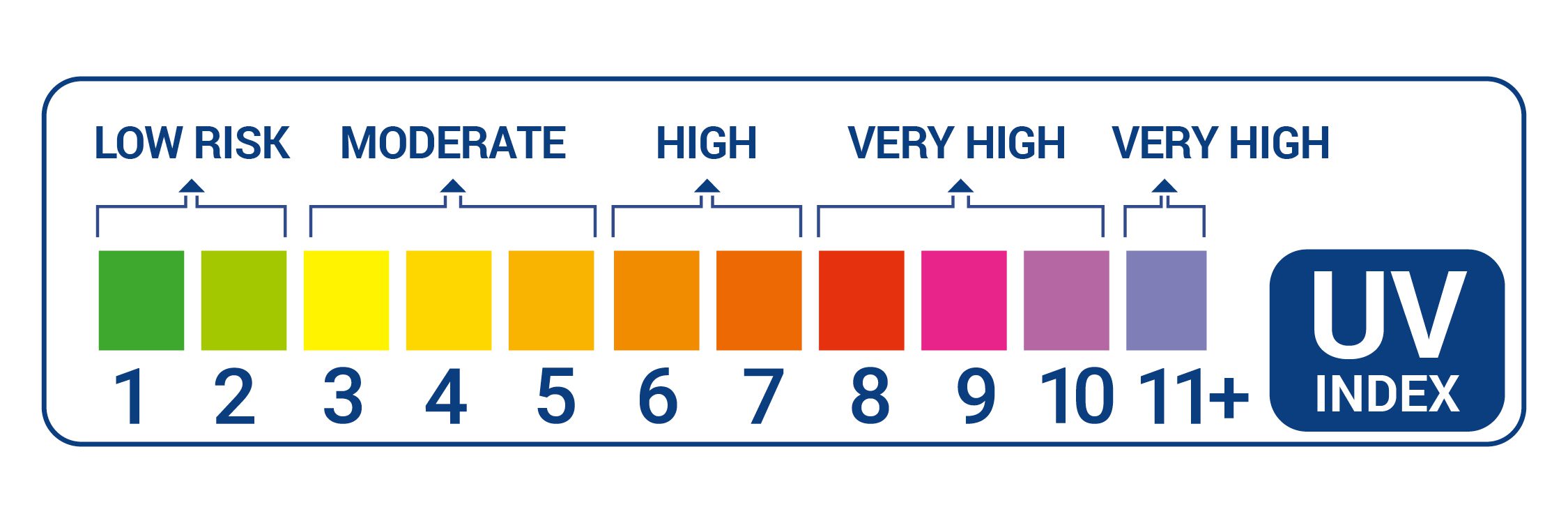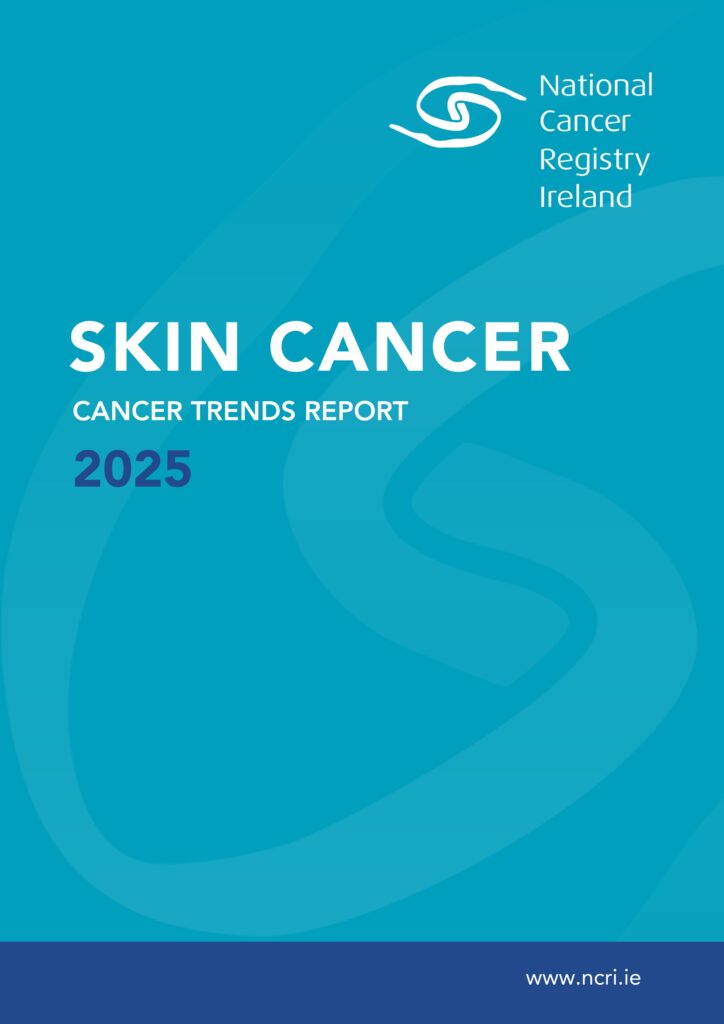First published May 2020, updated June 2021
Knowing a little bit about Earth’s relationship with the Sun allows us to understand how the intensity of the Sun’s rays can change during the year, and the importance of protecting our skin.
What causes the change in seasons?
Earth revolves around the Sun, taking a year to complete one orbit. But as it does so, it also spins on its own axis (an imaginary line that extends from the north to the south pole), making one complete turn in 24 hours – this explains our alternating pattern of day and night.
However, Earth is tilted by 23.5o in relation to its plane of orbit, and it’s this tilt that causes the change in seasons, affecting the duration of daylight and the angle of the Sun’s rays at different locations.
This means that at different times of year, different places on Earth receive more or less sunlight. The tilt also affects the distance through Earth’s atmosphere that the Sun’s rays travel. Earth’s atmosphere is approximately 100km thick. Rays entering the atmosphere directly overhead (90° angle) travel a distance of roughly 100km, but if the Sun is lower in the sky, the path length through the atmosphere is longer, resulting in more absorption, reflection and scattering, which reduces the intensity of the Sun’s energy at the Earth’s surface.
The closer a place is located to the poles, the greater its seasonal variation.
What are solstices and equinoxes?
As Earth orbits the Sun, solstices and equinoxes mark key transition points between the seasons.

Solstices
In the northern hemisphere, Earth is tilted towards the Sun during summer and away from it during winter. The summer solstice occurs around the 20th/21st June and the winter solstice around 21st/22nd December, when the North pole is tilted closest to, and farthest away from, the Sun.
The June solstice marks the beginning of summer when the Sun’s rays are directly overhead at the Tropic of Cancer (the imaginary line around the Earth that indicates the northernmost position that the sun’s rays can ever be directly overhead, as the Earth revolves around the Sun). The Sun reaches it’s highest point in the sky at noon and it is the longest day of the year in terms of daylight hours.
The December solstice marks the beginning of winter when the Sun’s rays are directly overhead at the Tropic of Capricorn (the imaginary line around the Earth marking the southernmost limit that the Sun’s rays will ever be directly overhead). The Sun reaches it’s lowest point in the sky at noon, and has the shortest hours of daylight.
Equinoxes
As Earth travels around the Sun, it reaches a position on it’s orbital path known as an equinox, when the Earth’s poles are neither tilted towards nor away from the Sun. The equinox marks the occasions when the Sun passes directly over the equator (the imaginary line drawn around the Earth, halfway between the North and South poles, dividing it into northern and southern hemispheres), and the duration of daylight is virtually the same everywhere on the Earth’s surface. The name equinox comes from the Latin: aequus, equal; nox, night.
In the northern hemisphere, this happens around 20th March, signalling the transition to spring when day becomes longer than night, and again around the 22nd/23rd September, signalling the transition to autumn when night becomes longer than day.
Defining the dates of the seasons – when does spring actually begin?
There are separate dates that could be said to mark the beginning of spring in calendars, so when does it actually begin?
Two methods frequently used to define the dates of the seasons are the astronomical and meteorological calendars.
Astronomical seasons are based on the position of the Earth’s orbit in relation to the Sun, marked by equinoxes and solstices. However, seasons vary in length; the dates of the equinoxes and solstices can change due to Earth’s elliptical orbit of the Sun. In the northern hemisphere, the spring equinox, also known as the vernal equinox, can occur on the 19th, 20th, or 21st March. In the southern hemisphere, the seasons are reversed, but begin on the same dates.
For statistical reasons, it’s common practice for weather scientists (meteorologists) in many middle and northern latitude countries to divide the year up into four 3-month blocks. These meteorological seasons are more closely aligned with the temperatures experienced during each time period. Because the date of the equinoxes change, it would be difficult to compare the seasons from year to year, as it wouldn’t be comparing ‘like with like’. So, from a meteorology perspective, to facilitate forecasting and comparison of monthly and seasonal statistics, spring always begins on March 1st.

What is solar ultraviolet radiation?
Ultraviolet radiation (UV) is one of the three major components of sunlight, which include visible light and infrared (heat). UV rays reaching the Earth are a combination of UVA and UVB.
Why is UV important?
UV in sunlight (solar UV) has both positive and negative effects. Although UVB plays a role in vitamin D production, UV can also damage skin cells, with overexposure causing both visible (sunburn) and invisible damage, resulting in premature ageing, eye damage (e.g. cataracts) and increasing skin cancer risk. However, the good news is that most skin cancers can be prevented by adopting sun protective behaviours.
UVA & UVB
Longer wavelength UVA is mostly involved in skin ageing while shorter wavelength UVB is mainly responsible for sunburn. However, both types of UV are linked to the development of skin cancer.
Seasonal UV changes
Solar UV is mostly comprised of UVA (typically > 95%), but the ratio of UVA to UVB is influenced by the height of the Sun in the sky, which is determined by latitude (distance north or south of the equator), season and time of day. The higher the Sun, the greater the content of UVB.
- Latitude: Only at places located on or within the tropics (between the Tropic of Cancer and Capricorn), can the sun ever be directly overhead: the closer to the equator, the greater the UV levels.
- Season: The amount of solar UV reaching Earth is influenced by the height of the Sun in the sky and therefore, changes with the seasons. During winter, the Sun is lower in the sky than during summer months. The length of the day is also shorter, and so UV is less intense.
- Time of day: Solar UV levels change throughout the day, rising during the morning and reaching their peak when the Sun is at its highest point in the sky above the horizon (solar noon), before declining during the afternoon and evening.
Think UV, not heat!
UV cannot be seen or felt, so you need to defend yourself against overexposure. Both occasional and chronic UV exposure can be damaging; sunburn is the most harmful, but frequent non-burning exposures can also increase skin cancer risk.
UV levels are influenced by many factors, including: your location (latitude and altitude), time of day, time of year, cloud cover and reflection.
Protect your skin: know the UV index
The UV index measures the UV level at the surface of the Earth, and gives an indication of the potential for skin damage. It is calculated in a way that indicates the risk of developing sunburn, which is mainly caused by UVB. The UV index ranges from zero upwards – the higher the number, the greater the risk. Remember the amount of time spent outside and personal vulnerability e.g. fair skin type, are also important considerations.

- Related: Confused about the UV Index?
- Related: What is solar UV radiation and why you need to know about it…?
- Related: Learn to protect and inspect
Watch the UV index
In Ireland, make sun protection part of your daily routine, particularly from April – September when the intensity of sunburn producing UV is greatest. Stay safe by limiting time in the midday sun when UV is strongest, typically between the hours of 11:00am – 3:00pm.

The UV index forecast for Ireland is included in Met Éireann’s regional weather forecasts from May to September but please be aware, that this can only be an average for any one day over the whole country. The clear/sunny sky peak UV index is reduced by cloud cover.
Remember the 5 ‘Ss’ of sun safety: Slip, Slop, Slap, Seek, Slide

Next article: Seek shade: lessen the impact of intense sunshine
For more information on how to Protect & Inspect™ against Melanoma Skin Cancer visit our information and resources page.












